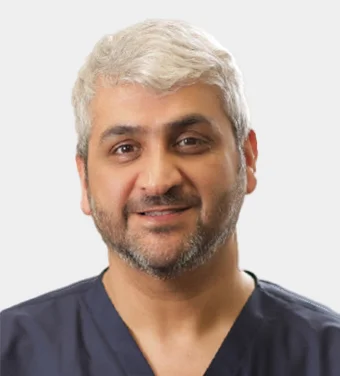
Experience cutting-edge Vertebroplasty and Kyphoplasty procedures at IBS Hospital. Our experts utilize innovative techniques to restore spinal health, providing you with relief from pain and a more active lifestyle.
What is Vertebroplasty & Kyphoplasty?
Vertebroplasty and kyphoplasty are both minimally invasive surgical procedures used to treat osteoporotic fractures by injecting a cement-like material directly into the fractured bone. This stabilizes the fracture and often provides immediate pain relief.
Kyphoplasty includes an additional step. Before injecting the cement-like material, a special balloon is inserted and gently inflated inside the fractured vertebra. The goal of this step is to restore height to the bone, reducing spinal deformity. Most patients can return to their normal daily activities after either procedure.
Kyphoplasty is specifically used to treat spinal compression fractures. Its goals are to alleviate pain from the fracture, stabilize the vertebra, and restore the vertebra to its normal height.
Following a physical assessment, you will undergo an OPD-based medical investigation for your spinal problem. Once the investigations and medical assessments are completed, your surgery will be carefully planned, and you will receive instructions to admit yourself on the day of the surgery.
During the procedure, the patient lies face down on the operating table. The surgeon makes a small, half-inch incision over the affected area. With the guidance of X-rays, a narrow tube is inserted through the pedicle into one side of the fractured vertebra. In balloon kyphoplasty, a balloon tamp is then inserted through the tube and into the fractured vertebra. Once inside the vertebra, the balloon tamp is inflated to create an open cavity inside the bone, restoring height to the collapsed vertebra. The surgeon then deflates and removes the balloon tamp, leaving a new bone cavity behind. A paste-like compound called PMMA, a type of bone cement, is injected into the cavity until it’s full. The cement hardens quickly, creating an internal cast within the fractured vertebra.
The surgeon then closes the incision, and the patient remains on the operating table while the cement hardens, which typically takes about 5 minutes. Most patients can return home the same day as the procedure.
What is the process / patient journey for Vertebroplasty & Kyphoplasty at IBS Hospital?
Day 1:
After the initial physical assessment, you will undergo medical investigations for your spinal problem. Once investigations and medical assessments are completed, your surgery will be planned.
You will be encouraged to ask any questions you may have regarding the surgery, hospital stay, recovery, and activities after surgery. Surgery is usually recommended when all reasonable conservative measures, such as pain medications, nerve sheath injections, physical therapies, and braces, have failed.
Day 2:
The discharge process will be initiated. You will receive an explanation about the discharge medication, exercises to be done at home, and follow-up. You will be discharged in stable condition.”
What is the post-surgery follow-up and recovery timeline?
You shall be advised for a follow-up visit after a week for stitch removal. Any further, follow up would be planned if in case you need any medical attention.
Our team of experts that make it possible
Meet the team of highly specialised and experienced neurosurgeons, neurologists, orthopedicians, and other experts in the field of neurology and spine care. Our team is dedicated to providing personalised and compassionate care to each patient, with the goal of helping them achieve the best possible outcomes.
IBS Hospital Empowers Your Treatment with Cutting-edge Technology
We continuously incorporate cutting-edge technologies from around the world into our offerings, such as a surgical system that allows for precise and confident complex procedures. We use magnetic stimulation to treat certain neurological conditions and create personalised brain maps for tailored treatment plans. Nerve monitoring during surgeries ensures the nervous system is not compromised, and a robotic exoskeleton aids in mobility issues. Our goal at IBS Hospital is to provide the best care possible, utilising the latest and most innovative technologies available.




